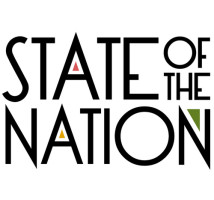The growth of peer-to-peer (P2P) lending market has been rapid over the past few years and this seems not to stop any soon. Through P2P lending, borrowers are able to access financing directly from investors, without having to incur high costs or go through tedious procedures associated with traditional financing methods. This sector has increased the number of borrowers who can now get loans they couldn’t get before and investors are reaping higher returns than what is being offered elsewhere.
The number, popularity and performance of P2P lenders have also continued to increase all over the world. Some of the P2P lenders such as Lending Club, Prosper, Zopa, Dianrong, etc. are continuously recording high growth rates. All these have made this sector to grow from “startup stage” to “adolescence stage” and it is swiftly moving towards maturity.
Different technology tools, including fintech services, have been developed to facilitate easier connection between borrowers and lenders
There are several factors that have contributed to the rapid growth of this sector. Some of these include: regulatory backing, government support, technology, banks deleveraging, low-interest rates, technology, and millennials. All these have made it nearly possible for anyone to access finance to meet their needs. Technology is one of the tools that have made the lending process simpler. Different technology tools, including fintech services, have been developed to facilitate easier connection between borrowers and lenders.
Several efforts are also being made by players in this sector to make P2P lending a mature and stable market. P2P lenders are now specializing in particular niches so as to improve their efficiency, aligning themselves to attract institutional investors, collaborating with traditional players such as banks, cooperating with other non-financial services players, establishing their own market networks, and bringing new innovations to maintain competitive advantage. All these are making this sector look bright.
 Screen and Monitor Borrowers
Screen and Monitor Borrowers
On the other hand, P2P has its own share of challenges. One of these challenges is the efficiency of lenders to screen and monitor borrowers so as to reduce the risks of lending. The lenders also need to find ways on how to deal with increasing market pressures. Lastly, players in the sector should be prepared for new regulatory pressures as governments strive to establish authorization regulations that will protect the industry.
Players in the industry should consider the challenges associated with financing markets and create flexible strategies
While emphasizing the need for regulations in P2P lending, Stanley Fischer, Vice-chair of US Federal Reserve Board of Governors said that even nonbank companies can also pose the same kind of vulnerabilities as those of banks, such as high leverage, complexity, and undue maturity transformation, which collectively can result to financial instability.
Therefore, the future of peer-to-peer lending is looking very bright. Nevertheless, players in the industry should consider the challenges associated with financing markets and create flexible strategies that will protect them against potential risks.
This post was originally published on this site






